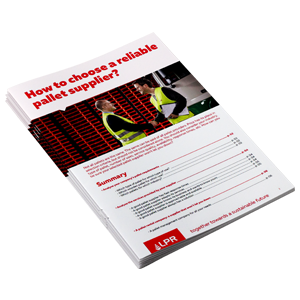A box of cereal for breakfast, batteries for the TV remote control, a toothbrush… consumer products are everywhere in our daily lives.
These products are consumed in large quantities, leading to a rapid turnover rate among distributors.
The challenge lies in anticipating and meeting the demands of consumers with utmost efficiency.
However, in a world where sustainability is becoming increasingly important, retailers must not overlook the environmental impact of their manufacturing and production processes.
In this article, we will explore the reasons why the circular economy is poised to revolutionise the future of the consumer goods supply chain.
Menu:
1 | What is the circular economy?
2 | Challenges facing the consumer goods supply chain
3 | How to integrate the circular economy into your supply chain
1. What is the circular economy?
The circular economy is an economic model that aims to extend the lifespan of products by promoting reuse and minimising waste.
Its primary goal is to reduce waste production and the consumption of raw materials.
This model encourages practices such as sharing, reusing, refurbishing, and recycling existing materials.
In essence, if a product can still generate value, it should be reused, and when it reaches the end of its life cycle, it should be recycled.
By breaking away from the traditional linear model of manufacturing, consuming, and disposing, the circular economy enables various sectors such as logistics, packaging, and digital industries to reduce greenhouse gas emissions, preserve natural resources, and decrease the annual amount of waste generated.
Case study: Pallet pooling, a circular business model
Pallet pooling is a logistics model that involves the sharing and utilisation of pallets among multiple companies throughout the supply chain.
Under this system, the pallets are managed and maintained, ensuring their availability for timely delivery to the production sites of the participating companies. Once the pallets are emptied of their goods, they are retrieved for future use.
This eco-friendly logistics practice aims to maximise the lifespan of pallets while enhancing the efficiency of the supply chain:
-
cost reduction: companies no longer need to buy their own stock of pallets, store them after use or dispose of them.
-
greater flexibility: manufacturers can order the pallets they need on time by easily adjusting their supply according to demand.
-
a 100% outsourced service: from their delivery to their collection, the pallets are entirely managed by the service provider, which allows companies to focus on the other links in the supply chain.
2. Challenges facing the consumer goods supply chain
2.1. Flexibility couples with quality
The FMCG industry faces dynamic demand fluctuations due to various factors like consumer trends and seasonal events (e.g., increased demand for chocolates during Easter).
Consequently, supply chains must exhibit high flexibility to accommodate these changes effectively.
Furthermore, FMCG products are subject to rigorous health and safety standards and regulations:
-
Food safety: In Europe, food products are subject to stringent regulations and must adhere to strict food safety standards to ensure the well-being of consumers. These regulations encompass various aspects, including production, handling, storage, and marketing, and require compliance with specific hygiene rules..
-
Labelling and consumer information: Clear and accurate labelling of products is essential to provide consumers with the necessary information. Labels play a crucial role in conveying important details about the product, such as ingredients, allergens, instructions for use, safety warnings, and storage advice.
-
Environmental standards: Consumer products are often regulated by environmental standards that focus on various aspects, including packaging, waste management, and the durability of materials. These regulations aim to minimise the environmental impact of products throughout their life cycle.
Companies must maintain constant vigilance throughout the entire supply chain, starting from the production stage and extending to the final delivery of their products.
2.2. Internationalisation
The international import and export of FMCGs adds a geographic dimension to supply chain management, which in turn increases its complexity. Effective management of this global supply chain requires seamless coordination among various stakeholders involved.
2.3. The sustainability of production and distribution processes
Taking environmental and social issues into account is essential today:
-
for companies who are obligated to meet government standards and requirements pertaining to the sustainability of their production processes.
-
for consumers, who expect companies to engage in sustainable and environmentally friendly practices throughout the supply chain.
3. How to integrate the circular economy into your supply chain
As you have seen, embracing the circular economy can act as a catalyst for growth in your industry and enable you to manage your supply chain sustainably.
From the sourcing of materials to the final delivery of your products, it is crucial for every aspect of your supply chain to embrace the principles of the circular economy to minimise the ecological impact of your company.
Here are the key steps you should take to integrate the circular economy into your supply chain.
3.1. Measure the environmental impact of your supply chain
The most effective approach to reduce the environmental impact of your supply chain is to have a comprehensive understanding of it.
Begin by assessing the ecological impact of each link in your supply chain. This evaluation will provide crucial insights into the stages where interventions are possible and necessary.
Indicators to be assessed and monitored
While greenhouse gas (GHG) emissions are a significant factor contributing to climate change and are commonly monitored, there are additional factors to consider in your assessment:
-
Energy consumption: measure the amount of energy used to produce, store, and transport your products.
-
Waste management: measure the amount of waste generated, as well as the amount of waste recycled or reused if certain processes are already in place within your company.
-
The impact on biodiversity: assess the impact of your supply chain on the biodiversity of its environment (quantity of land used by your production site, quantity and type of species that populate the ecosystem of your supply chain)
-
The use of toxic materials: it is crucial to assess your supply chain to identify any usage of toxic materials and take appropriate actions.
Regular monitoring of ecological performance indicators (EPIs) and their integration into your reports is essential to demonstrate the impact of the changes implemented in your supply chain.
These indicators, along with other key performance indicators (KPIs), serve as essential criteria for measuring the long-term environmental performance of your supply chain.
Methods for assessing the environmental impact of your supply
There are several methods that will allow you to assess your company's greenhouse gas emissions. The most used and widely recognised are:
-
Carbon footprint: This tool allows you to analyse the direct greenhouse gas emissions of your organisation. It provides insights into the amount of carbon dioxide and other greenhouse gases released during the production, transportation, and disposal of goods and services.
-
ISO 14064-1:2006 standard: This international standard establishes principles and requirements for organisations to measure, report, and reduce their greenhouse gas emissions. It provides guidelines for conducting greenhouse gas inventories, setting emission reduction targets, and verifying emission reduction claims.
-
The GHG Protocol: this international protocol offers a framework for all players in the private and public sector to account for and manage their greenhouse gas emissions.
-
Life Cycle Assessment (LCA): this method makes it possible to assess the environmental impacts of a product or service throughout its life cycle, from its production to its disposal.
3.2. Establish a sourcing policy
Once you have assessed the ecological impact of your supply chain, it is crucial to act. Begin by implementing an ethical and responsible sourcing policy that sets guidelines for obtaining sustainable supplies.
This policy will serve as a reference for all stakeholders involved in the procurement process, enabling them to select and collaborate with suppliers who adhere to the established principles.
For instance:
In 2017, Unilever, the renowned Dutch-British multinational, introduced its own responsible sourcing policy, which outlines their commitment to sustainable procurement practices.
Here are some of its core principles:
-
Conducting business lawfully and with integrity
-
Conducting business in a way that embraces sustainability and reduces environmental impact:
“Sustainability practices are integrated into supplier operations and activities that aim to: reduce waste generation and achieve zero landfill; reducing greenhouse gas emissions and achieving carbon neutral solutions; Reduce water consumption; protect and enhance nature and biodiversity; and stop deforestation.”
-
All workers are treated fairly and with respect and dignity.
3.3. Establish a sourcing policy
Consumer products are known for generating significant amounts of waste, particularly due to packaging.
Packaging serves various purposes for these products:
-
Tertiary or transport packaging protects the product during transportation, especially for fragile items such as food.
-
Primary or sales packaging provides consumers with information about the product's composition and specific features. It also serves as a marketing tool to attract and engage consumers.
In many cases, the packaging remains in good condition after its initial use, making it crucial to establish systems for recovery and reuse.
Various solutions already exist to effectively utilise tertiary packaging and extend its lifecycle, with pallet pooling being a notable example.
By implementing this supply chain management practice, different types of packaging are consolidated and shared within a network of manufacturers, optimising their use.
Managed by specialised pooling companies, the packaging is promptly delivered to manufacturers as needed, collected from distributors, and maintained and repaired for reuse after each cycle.
3.4. Recycle your packaging
Certain types of reusable packaging can also be recycled and repurposed in various ways:
-
Plastic packaging like HDPE, LDPE, PP, PET, and more, is commonly transformed into granules that serve as raw material for manufacturing new products. For instance, a milk bottle can be recycled into rubbish bags.
-
Wooden transport packaging, such as pallets, can be recycled by converting them into wood chips or forest chips that can be used for mulching the soil. In either case, the chips will eventually decompose naturally, turning into compost.
Please note: Not all packaging is inherently recyclable, and some packaging requires thorough cleaning before it can be recycled (e.g., a pizza box).
3.5. Use reverse logistics wisely
Reverse logistics encompasses the management and optimisation of products recovered by a company from consumers.
Unfortunately, some industries still prioritise disposal rather than reuse when it comes to handling returned goods or products.
However, due to increasing ecological and economic concerns, companies are now encouraged to incorporate the recycling of products returned by consumers.
Similarly, unsold items should also be considered. Even though they may be considered obsolete for various reasons (such as improper storage or transportation conditions that could compromise product quality), certain materials within them may still be in good condition and can be reused or recycled.
This approach aligns with the principles of the circular economy and can assist companies in reducing manufacturing and procurement costs within their supply chain.
Conclusion
The circular economy represents the future of the FMCG supply chain for several reasons:
-
The circular economy presents a sustainable alternative to traditional models of production, consumption, and disposal of products. By prolonging the lifespan of products and encouraging their reuse, maintenance, and recycling, companies can reduce their reliance on raw materials and decrease greenhouse gas emissions.
-
Adopting circular economy practices within the supply chain, such as pallet pooling, offers notable advantages. These eco-friendly practices contribute to cost reduction, increased flexibility, and overall enhancement of supply chain performance.
-
Furthermore, the circular economy enables retailers to meet consumer demands for product performance while simultaneously contributing to the preservation of natural resources.
Were you inspired by this article to incorporate the circular economy into your supply chain?
Contribute to a sustainable future by opting for LPR wooden pallets for all your freight transport requirements. These pallets are essential for ensuring the efficient operation of your supply chain while aligning with environmentally conscious practices.
Are you interested in joining a pallet pool?
Our teams are available to assist you and ensure a smooth transition towards making the change. Contact us today!



